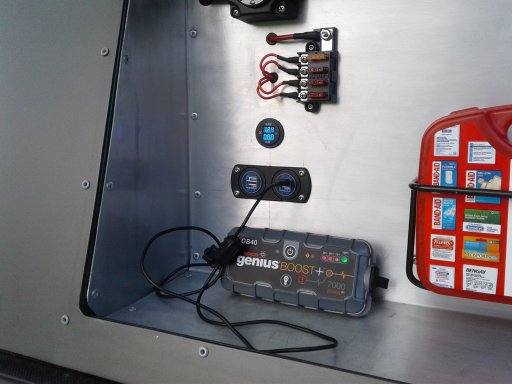
Enthusiast III
Good people,
I have a question regarding circuit breaker sizing.
I’ve direct-wired a 4-gauge wire to my 2005 Silverado. Positive to a terminal block under the hood designated for jumper cable clamping. Negative to the block. On the other end is an Anderson connector, which is on the front of my truck.
I’ve taken a pair of jumper cables and cut one end off, adding an Anderson connector. The idea being that I can perform jumps more efficiently.
What size circuit breaker should I add to the positive terminal wire? Any need? My concern is two-fold. One, a wire short to ground under the hood (unlikely given my routing and the insulation thickness. A second concern is an overload of sorts between vehicles.
I’ll try and add a picture later.
Thoughts? Hope this makes sense.
KG
I have a question regarding circuit breaker sizing.
I’ve direct-wired a 4-gauge wire to my 2005 Silverado. Positive to a terminal block under the hood designated for jumper cable clamping. Negative to the block. On the other end is an Anderson connector, which is on the front of my truck.
I’ve taken a pair of jumper cables and cut one end off, adding an Anderson connector. The idea being that I can perform jumps more efficiently.
What size circuit breaker should I add to the positive terminal wire? Any need? My concern is two-fold. One, a wire short to ground under the hood (unlikely given my routing and the insulation thickness. A second concern is an overload of sorts between vehicles.
I’ll try and add a picture later.
Thoughts? Hope this makes sense.
KG










